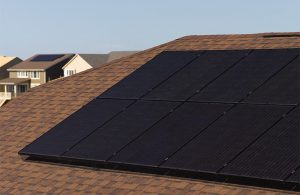Revolutionary Solar Technology from Ascent Solar to Power NASA’s LISA-T Spacecraft

Revolutionary Solar Technology from Ascent Solar to Power NASA’s LISA-T Spacecraft
by Clarence Oxford
Los Angeles CA (SPX) Feb 27, 2024
In an ambitious move to advance space power generation technology, Ascent Solar Technologies, Inc. (Nasdaq: ASTI), a leading innovator in the field of photovoltaics, is set to make a significant contribution to NASA’s forthcoming Lightweight Integrated Solar Array and AnTenna (LISA-T) mission. Scheduled for launch this summer, the mission represents a pivotal step forward in demonstrating the capability of deploying large-area solar arrays on small, cost-effective spacecraft.
The LISA-T mission, orchestrated by NASA’s Space Technology Mission Directorate alongside the Marshall Space Flight Center in Huntsville, is poised to showcase the deployment of advanced solar arrays that are not only lightweight and cost-efficient but are also capable of producing thrice the power of conventional photovoltaic (PV) solutions within a similar system envelope. This initiative marks the fourth installment in NASA’s Pathfinder Technology Demonstrator (PTD) series, aimed at evaluating novel, small spacecraft capabilities in orbit.
Managed by NASA’s Ames Research Center in Silicon Valley, the PTD series plays a crucial role in facilitating the integration of groundbreaking technologies into NASA’s blueprint for future scientific and exploratory endeavors. Specifically, the LISA-T (PTD-4) mission is designed to accommodate deployable solar arrays that significantly exceed the CubeSat form factor, potentially generating kilowatts of power for small spacecraft.
Ascent Solar Technologies’ selection for this prestigious space mission is the fruit of extensive collaboration with NASA, aimed at refining the PV modules to meet the challenging mass and power budgets of the LISA-T spacecraft.
Paul Warley, CEO of Ascent Solar Technologies, emphasized the mission’s potential to fulfill previously unattainable spacecraft requirements. He highlighted the mission as a prime example of the synergies achievable through public-private partnerships, leveraging commercial technologies for the development of highly capable spacecraft for both government and commercial space missions.
The solar modules developed for the LISA-T mission have significantly informed the design of Ascent’s Titan line of space products. This line is engineered to maximize power generation in the space environment, achieving unprecedented efficiency with minimal degradation over the mission’s lifespan.
Prior to this mission, Ascent’s PV products underwent rigorous testing on the International Space Station (ISS). The company’s CIGS material, both in bare and encapsulated forms, was validated for resilience in space through NASA’s MISSE-X experiment. This sets the stage for further evaluations of Ascent modules equipped with lower-cost and lighter-weight laminates on an upcoming MISSE payload, scheduled to fly on SpaceX’s 30th Commercial Resupply Mission to the ISS this March.
Related Links
Ascent Solar Technologies
All About Solar Energy at SolarDaily.com





